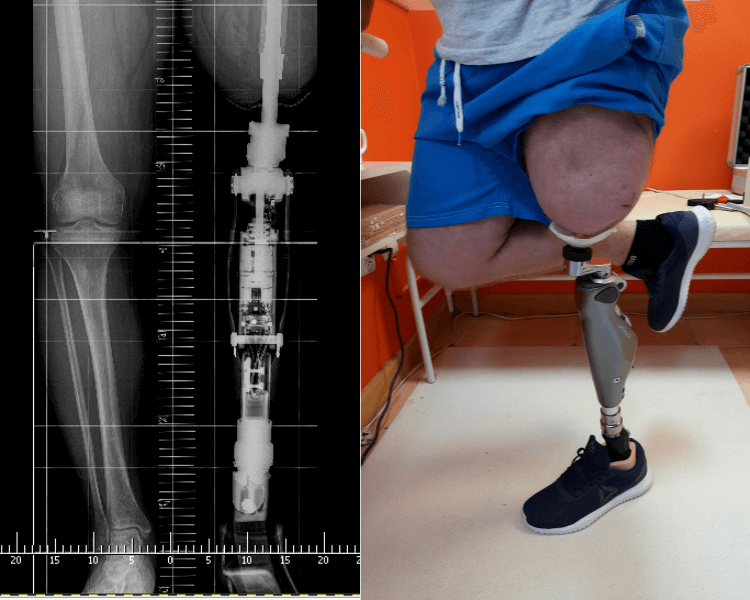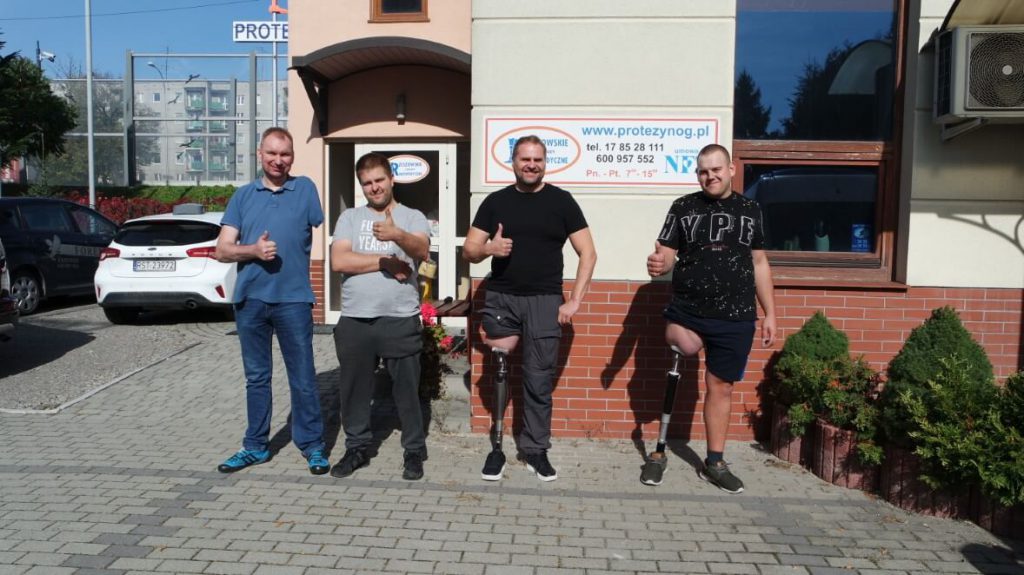Osseointegration
We improve the quality of life of people with lower limb amputations thanks to an innovative method.
What is osseointegration?
It is an innovative method of treating patients amputated in the area of the lower limbs. It involves the implantation of an intraosseous implant that enables the fixation of prosthetic components. The inner part is called an endoprosthesis and the outer part is called an exoprosthesis. The treatment is also performed in one step Stable fixing of the endoprosthesis implant enables the transmission of stimuli from the substrate in a manner similar to the natural limb. This allows for better walking, moving on uneven terrain, and a natural feeling of the ground.
THE SURGERY IS PERFORMED IN POLAND – AT THE AVIMED HOSPITAL
The team led by Prof. Horst Aschoff together with Łukasz Kawik MD., Maiusz Zawal MD, Jakub Centarski MD performs treatments in Katowice.
We are all a good team.


Osseointegration improves quality of life
Osseointegration is a way to a better life, an active life for patients after lower limb amputation. This innovative method improves the quality of life for the following reasons:
- prostheses can be worn daily (24 hours a day),
- full range of movement,
- stable connection of the prosthesis with the body,
- ease of putting on and taking off the prosthesis (5-10 seconds),
- comfort while sitting (the socket does not pinch),
- smooth and safe gait,
- full control over the prosthesis,
- natural movement of the hip joint.
The prosthetic socket versus the implant
Every patient knows that the most important part of the prosthesis is the prosthetic socket. Despite the great development of the technique of making prosthetic sockets, making a socket well (about which you forget when you wear it) is not easy. From time to time, the circumference of the stump changes and a new socket needs to be made. The prosthetic socket causes the atrophy of the muscle tissue, the stump sweats (especially in summer), there are skin changes, abrasions, etc.
Use of a surgical implant placed in the bone, which allows direct connection to the prosthesis, offers amputees patients a new level of movement control and functionality, and thus better walking, moving on uneven terrain and transmitting stimuli from the ground in a manner similar to natural, which cannot be experienced with conventional socket prostheses. The use of osseointegration also avoids the problems typical of socket prostheses such as skin discomfort of the stump, soft tissue conflict with the bone stump and socket, pain or instability when wearing a prosthesis, which ultimately often leads to difficulties in patient rehabilitation and poor functional outcomes in prostheses.
The osseointegration procedure can be performed in one or two steps
Single-step osseointegration
During the surgery, the implant is inserted into the bone and a stoma, i.e. a perforation in the stump enabling the attachment of the module connecting the implant with the prosthesis, is made at the same time.
Duration of stay in hospital 4-5 days.
Two-step osseointegration
Step I
- Implanting the implant into the bone and closing the stump.
- Duration of stay in hospital 3-4 days.
- After 6 weeks from the date of surgery, the second step is performed.
Step II
- The procedure consists in making a perforation (hole) in the stump that allows the attachment of the module connecting the implant with the prosthesis.
- Duration of stay in hospital 2-3 days.
Step 3 mobilization
Six weeks after the surgery, the patient receives a prosthesis and starts learning to walk.
Additional information
1. The surgeon qualifies the patient for the osseointegration procedure
2. Before a medical consultation, the patient is required to perform: an X-ray with a ball, photo of the stump and fill in the questionnaire and send it to us.
3. If the patient qualifies for the procedure, a computed tomography of the stump will be necessary before designing the implant.
The doctor decides whether the procedure will be performed in one or two steps, in consultation with the patient.
Contact us, we will provide the address and date of the consultation. The consultations are free.
